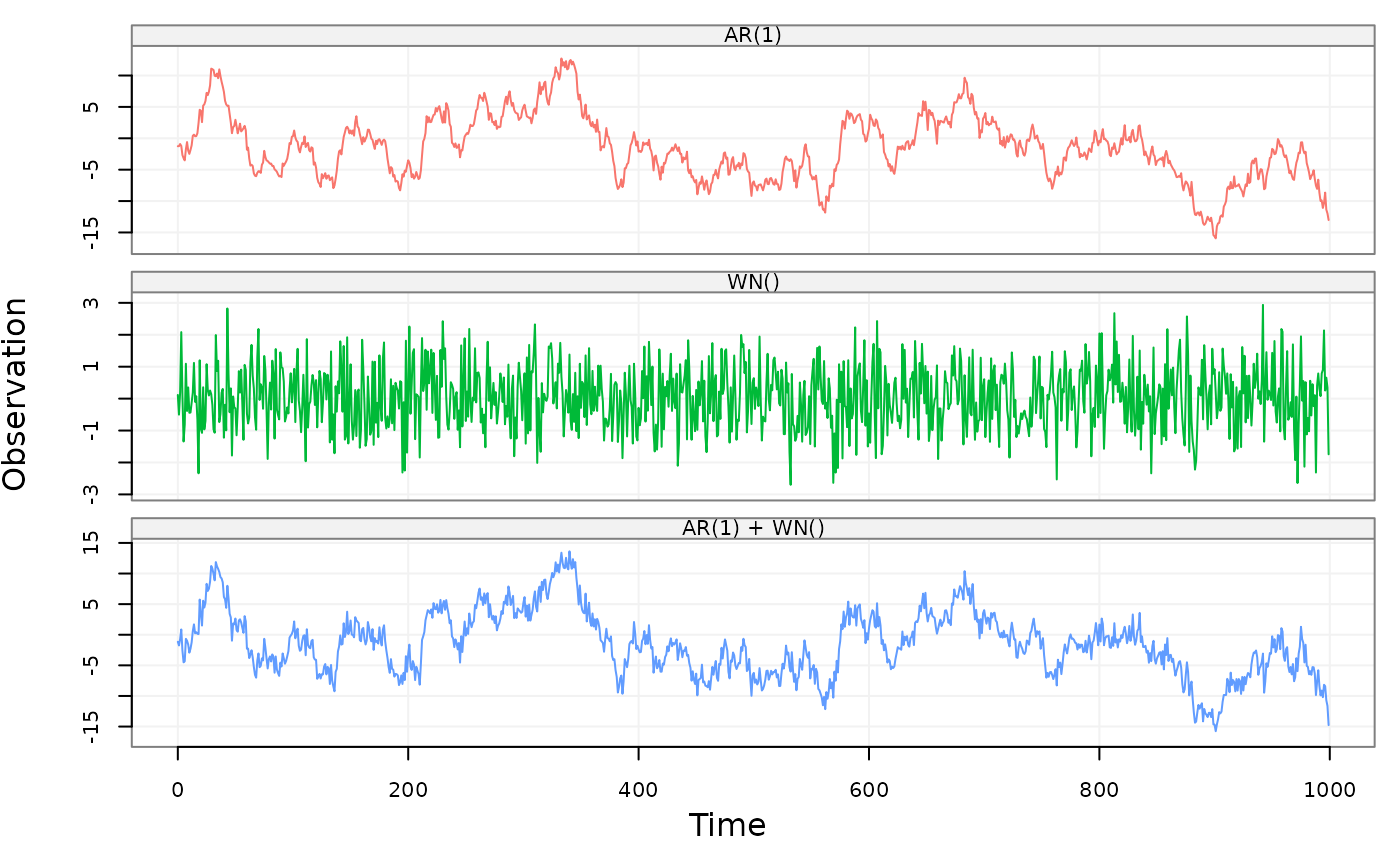Simulate a lts object based on a supplied time series model.
gen_lts(
n,
model,
start = 0,
end = NULL,
freq = 1,
unit_ts = NULL,
unit_time = NULL,
name_ts = NULL,
name_time = NULL,
process = NULL
)Arguments
- n
An
intergerindicating the amount of observations generated in this function.- model
A
ts.modelorsimtsobject containing one of the allowed models.- start
A
numericthat provides the time of the first observation.- end
A
numericthat provides the time of the last observation.- freq
A
numericthat provides the rate/frequency at which the time series is sampled. The default value is 1.- unit_ts
A
stringthat contains the unit of measure of the time series. The default value isNULL.- unit_time
A
stringthat contains the unit of measure of the time. The default value isNULL.- name_ts
A
stringthat provides an identifier for the time series data. Default value isNULL.- name_time
A
stringthat provides an identifier for the time. Default value isNULL.- process
A
vectorthat contains model names of each column in thedataobject where the last name is the sum of the previous names.
Value
A lts object with the following attributes:
- start
The time of the first observation.
- end
The time of the last observation.
- freq
Numeric representation of the sampling frequency/rate.
- unit
A string reporting the unit of measurement.
- name
Name of the generated dataset.
- process
A
vectorthat contains model names of decomposed and combined processes
Details
This function accepts either a ts.model object (e.g. AR1(phi = .3, sigma2 =1) + WN(sigma2 = 1)) or a simts object.
